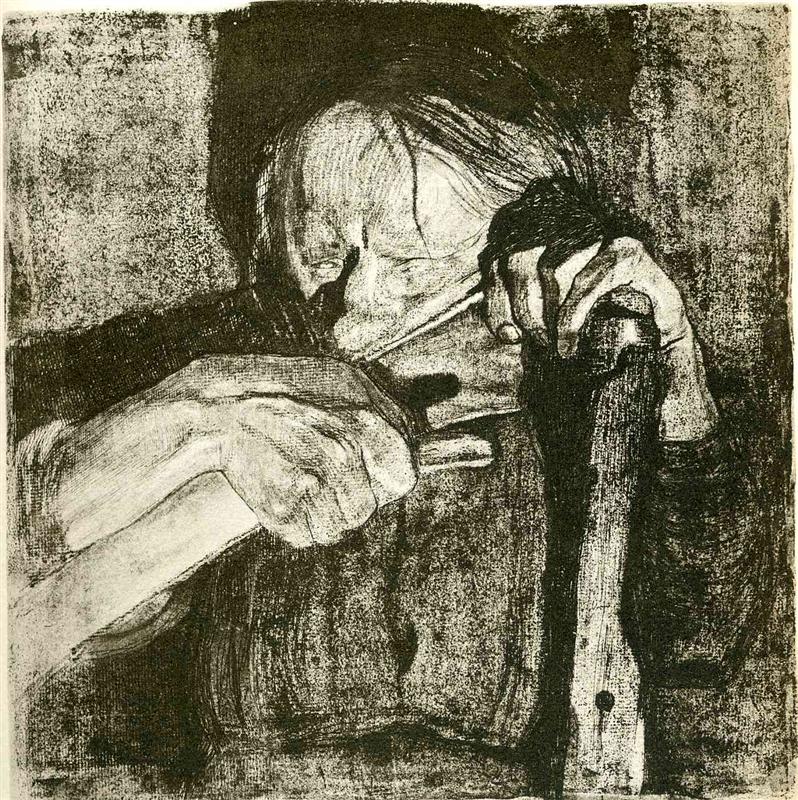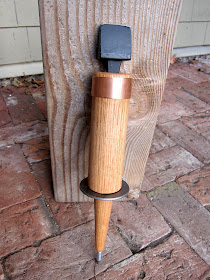From:
Text version:
The clash and the clatter of mowing-machines
Float up where the old man stands and leans
His trembling hands on the worn old snath,
As he looks afar in the broadening path,
Where the shivering grasses melt beneath
A seven foot bar and its chattering teeth.
When a man gits old, says he,
When a man gits old,
He is mighty small pettaters
As I've just been told.
I used to mow at the head of the crew,
And I cut a swath that was wide as two.
Covered a yard, sah, at every sweep;
The man that follered me had to leap.
I made the best of the critters squeal,
And nary a feller could nick my heel.
The crowd that follered, they took my road
As I walked away from the best that mowed.
But I can't keep up with the boys no more,
My arms are stiff and my cords are sore:
And they've given this rusty scythe to me
-- It has hung two years in an apple tree --
And told me to trim along the edge
Where the mowing-machine has skipped the ledge.
It seems, sah, skurcely a year ago
That I was a-showin' 'em how to mow,
A-showin' em how, with the tanglin' grass
Topplin' and fallin', to let me pass;
A-showing 'em how, with a five-foot steel,
And never a man who could nick my heel.
But now it's the day of the hot young blood,
And I'm doin' the job of the fuddy dud;
Hacking the sides of the dusty road
And the corner clumps where the men ain't mowed.
And that's the way, a man gits told,
He's smaller pettaters when he grows old.
-- by Holman F. Day
Sources:
Whetting the scythe
by Käthe Kollwitz (1867-1945), 1905
Whitworth Art Gallery,
The University of Manchester
http://gallerysearch.ds.man.ac.uk/Detail/15049Up in Maine: Stories of Yankee Life Told in Verse
by Holman F. Day
Boston, Small, Maynard & Company, 1901, p. 57
Google Books copy








